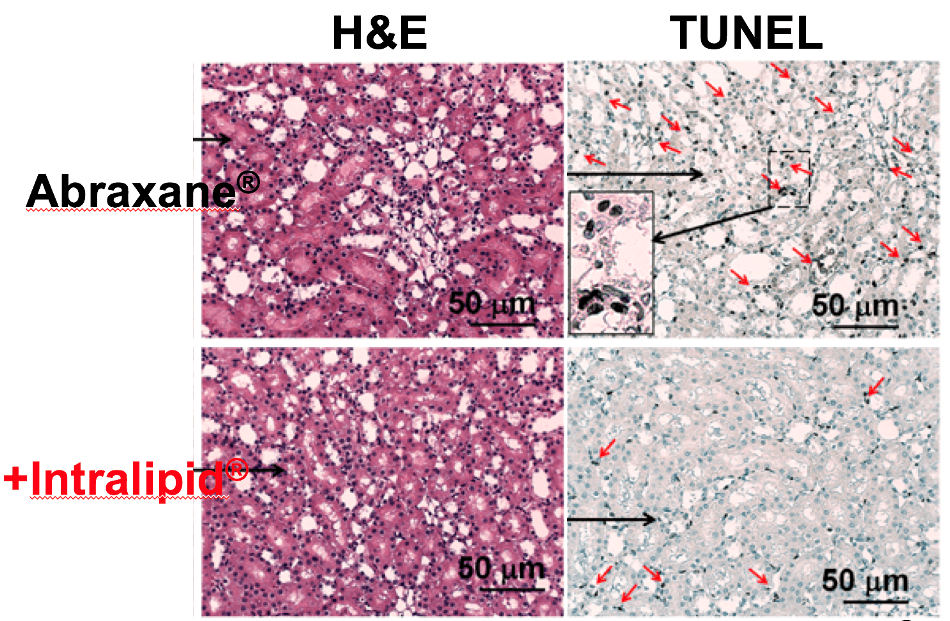Nov 29 2017
A new method for delivering chemotherapy nanodrugs capable of increasing the drugs’ bioavailability and reducing side-effects has been developed by Carnegie Mellon University researchers. Their study has been published online in Scientific Reports and it demonstrates that administering an FDA-approved nutrition source before chemotherapy can help reduce the quantity of the toxic drugs that settle in the spleen, kidneys and liver.
 Administering a combination of Abraxane® and Intralipid® results in less of toxicity of the chemotherapy drug in the kidneys (bottom row) than administering Abraxane® alone (top row). Credit: Carnegie Mellon University
Administering a combination of Abraxane® and Intralipid® results in less of toxicity of the chemotherapy drug in the kidneys (bottom row) than administering Abraxane® alone (top row). Credit: Carnegie Mellon University
Nanodrugs, drugs attached to small biocompatible particles, prove to be promising in the treatment of several diseases, including cancer. However, the delivery of these drugs is not extremely efficient — only about 0.7% of chemotherapy nanodrugs in fact reach their target tumor cells. The remainder drugs are absorbed by other cells, including those in the spleen, liver and kidneys. Building up of the drugs in these organs causes toxicity and side-effects that negatively impact the quality of life of patients.
Chien Ho, professor of biological sciences at Carnegie Mellon University, and his colleagues have now produced a novel way to enhance delivery of chemotherapy nanodrugs by employing Intralipid®, an FDA-approved nutrition source that helps to temporarily blunt the reticuloendothelial system — a network of tissues and cells found all over the body, including in the lymph nodes, spleen, blood and liver, that play a vital role in the immune system.
Ho along with his colleagues tested their technique in a rat model of cancer by employing three FDA-approved chemotherapy nanodrugs, Marqibo®, Abraxane® and Onivyde®, and one experimental platinum-based anti-cancer nanodrug. In the study, Intralipid was administered one hour before delivering a chemotherapy nanodrug to the animal. They discovered that their method decreased the amount of the drug that was found in the spleen, liver and kidneys and also reduced the toxic side-effects of the drug. They further discovered that an increased amount of the drug was available to attack tumor cells. Furthermore, the Intralipid treatment was found to have no harmful impact on drug efficacy or tumor growth.
The researchers are certain about the possibility of applying their drug delivery methodology to a wide range of nanodrugs without making any adjustments to the drugs.
This methodology could have a major impact in the delivery of nanodrugs not only for patients undergoing chemotherapy for cancer treatment but also to those being treated with nanodrugs for other conditions.
Chien Ho, professor of biological sciences at Carnegie Mellon University